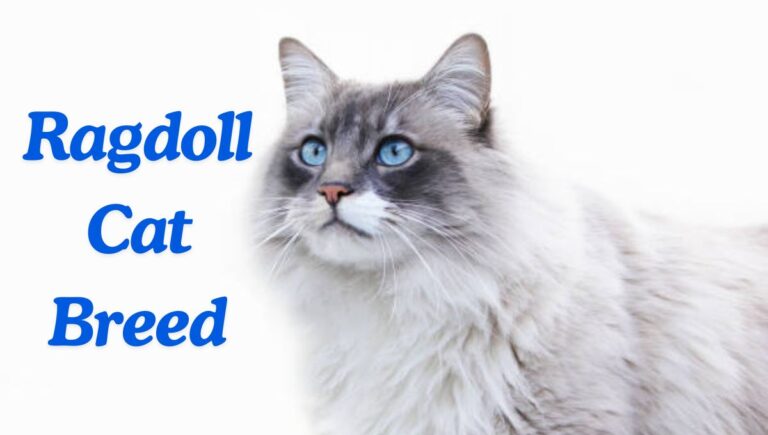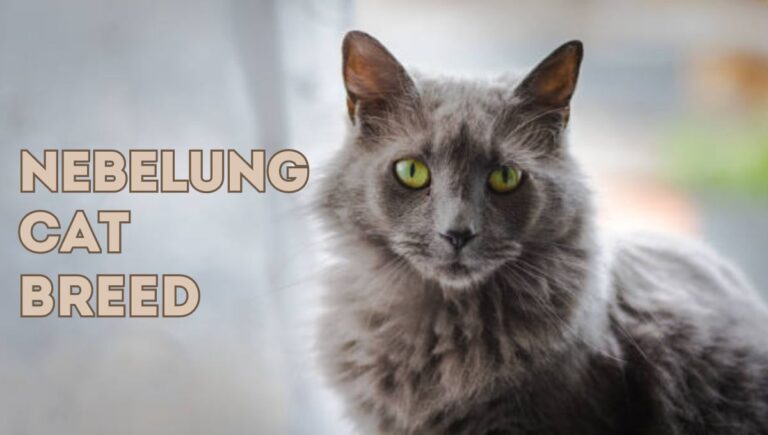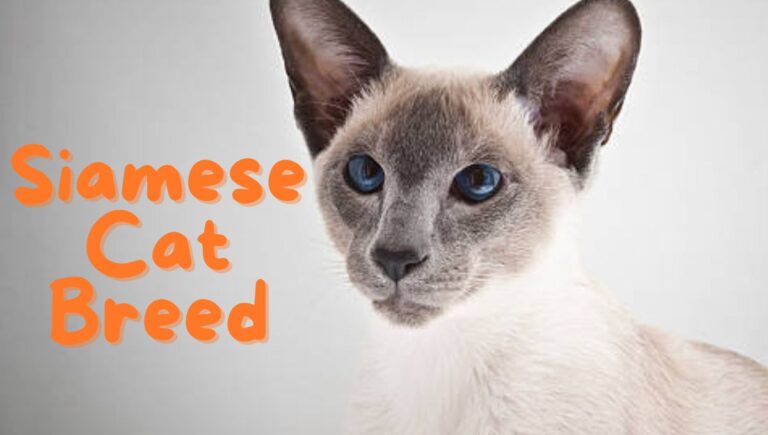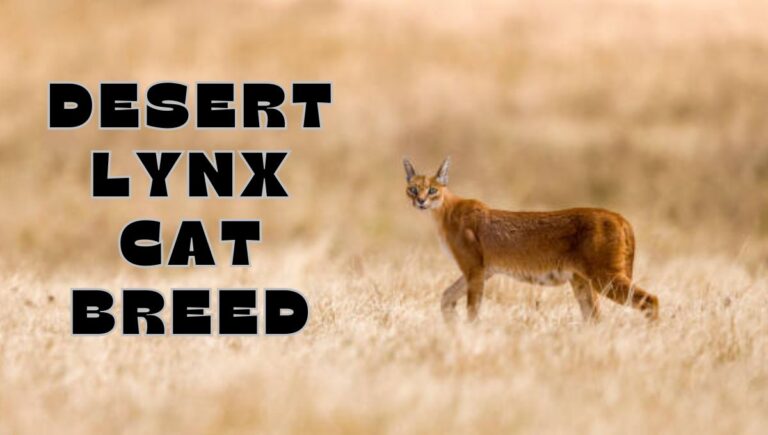Thai Lilac Cat Breed
I. Introduction to the Thai Lilac Cat Breed
The Thai Lilac cat breed emerges from the heart of Thailand, carrying with it a legacy as rich and vibrant as its coat. This breed’s name is a tribute to the unique lilac-blue shade of its fur, a rare hue that sets it apart in the feline world. The Thai Lilac is not just a visual delight but also a bundle of affection, known for its friendly demeanor and strong bonds with humans.
A. Distinctive Features
Thai Lilac cats are renowned for their striking appearance and charming personality. They possess a distinctive heart-shaped face, complemented by large, expressive green eyes that seem to reflect their loving nature. Their short, dense, and silky coat, bathed in the breed’s signature lilac color, adds to their elegance.
B. Unique Characteristics
Beyond their beauty, Thai Lilacs are celebrated for their intelligent and playful spirit. They are easy to train, making them a perfect companion for engaging activities and mental stimulation. With moderate exercise needs, they fit well into various lifestyles, always ready to offer their affectionate company.

The Thai Lilac cat is a natural wonder, a breed that developed without human intervention, showcasing the marvels of genetic diversity. As a relative of the Korat, the Thai Lilac carries similar traits but stands out with its own distinct and captivating allure.
II. Origin and History of the Thai Lilac Cat Breed
The Thai Lilac cat breed is a relatively recent addition to the feline world, with its origins tracing back to the late 20th century. This breed’s history is intertwined with that of the Korat, a breed that has been a part of Thai culture for centuries. The Thai Lilac’s emergence is a tale of genetic serendipity, where recessive genes from two Korat cats combined to produce a kitten with a unique lilac coat in 1989.
A. The Birth of a New Breed
The first known Thai Lilac kitten, named Jenanca Lilac Lilee, marked the beginning of the breed. This unexpected hue, a soft pinkish tone, was a departure from the traditional blue of the Korat. As more kittens with this distinctive coloration were born, they collectively became recognized as the Thai Lilac breed.
B. Geographical Roots
Originating from Thailand, the Thai Lilac carries the essence of its homeland in its genes. Thailand’s warm climate and rich cultural heritage have contributed to the breed’s physical and temperamental characteristics. The Thai people have long revered cats, and the Thai Lilac is no exception, embodying the grace and poise that is highly valued in the region.
C. Influence of Origins on Characteristics
The Thai Lilac’s origins have significantly shaped its current traits. The breed’s affectionate nature and sociability are reflective of the close bond between Thai people and their cats. The Thai Lilac’s intelligence and playfulness are also a testament to the breed’s active role in Thai households, where cats are considered part of the family.
D. Folklore and Legends
In Thai culture, cats are often surrounded by folklore and mystique. While there are no specific legends about the Thai Lilac, the breed shares the Korat’s storied past. The Korat is mentioned in the “Tamra Maew,” or “The Cat Book Poems,” which dates back to the Ayutthaya Kingdom of the 14th century. These ancient texts depict cats as bringers of good fortune, and it’s likely that the Thai Lilac is enveloped in similar beliefs.
E. Historical Significance
The Thai Lilac’s development is significant as it represents the natural evolution of a breed without human intervention. It showcases the diversity within the feline species and the beauty that can arise from genetic diversity. The breed’s history is not only a fascinating chapter in the world of cat breeding but also a reminder of the importance of preserving and celebrating natural variations within breeds.
III. Physical Characteristics of the Thai Lilac Cat Breed
When considering the Thai Lilac cat, it’s essential to understand their physical attributes fully. This breed is not only visually stunning but also possesses a range of characteristics that make them unique. Below is a detailed table that encapsulates the key physical traits of the Thai Lilac cat breed:
| Characteristic | Detail |
|---|---|
| Height | Not Known |
| Weight | Medium |
| Life Span | 10-12 years |
| Good With | Families, singles, and seniors |
| Temperament | Intelligent, playful, affectionate |
| Intelligence | High |
| Shedding Amount | Moderate |
| Grooming | Weekly brushing |
| Exercise Needs | Moderate |
| Energy Level | Moderate to high |
| Drool Amount | Low |
| Coat Length/Texture | Short, dense, and silky |
| Colors | Lilac or lavender |
| Patterns | Solid color, sometimes with a point coloration |
B. Size, Coat Type, and Color Variations of the Thai Lilac Cat Breed
The Thai Lilac cat breed is a medium-sized feline that exudes elegance through its unique coat and coloration. This breed’s size and physical characteristics are a blend of its Korat heritage and the distinct lilac mutation that defines it.
1. Size and Weight
Thai Lilac cats are known for their moderate stature, typically weighing around 15 pounds. However, like any breed, there can be variations with some individuals being smaller or larger than average. Males generally tend to be slightly larger than females, but both sexes share a muscular and well-proportioned build that contributes to their agile nature.
2. Coat Type and Texture
The coat of a Thai Lilac is one of its most striking features. It is short, dense, and silky, lying close to the body and highlighting the cat’s graceful movements. The texture of the coat is smooth, providing a pleasant tactile experience when petted. Regular grooming is recommended to maintain the coat’s health and luster, which usually involves weekly brushing.
3. Color Variations
The defining characteristic of the Thai Lilac is its coat color. The breed exhibits a beautiful lilac-gray coat color with darker points, typically seen in the ears, face, tail, and paws. This unique coloration is the result of a co-dominant gene, meaning both parents must carry the gene for kittens to exhibit the lilac point coloration.
The lilac color should be uniform across the body, although some Thai Lilacs may have point coloration, which resembles that of Siamese cats. The points are a darker shade, providing a stunning contrast to the lighter body color. It’s important to note that the color can vary slightly depending on lighting and the cat’s age, as the coat may darken with maturity.
4. Common Color Patterns
While the Thai Lilac is primarily known for its solid lilac color, there are variations within the breed. Some individuals may exhibit a point coloration pattern, where the extremities of the body—the “points”—are a darker shade than the rest of the body. This pattern is similar to that seen in Siamese and related breeds, adding to the Thai Lilac’s exotic appeal.

C. Distinctive Features of the Thai Lilac Cat
The Thai Lilac cat, a rare and enchanting breed, is a treasure trove of unique characteristics that distinguish it from other feline breeds. With its origins steeped in the rich history of Thailand, this breed boasts a myriad of physical traits that not only contribute to its stunning appearance but also to its growing popularity among cat enthusiasts worldwide.
1. Enigmatic Ear Structure
Ears are one of the most expressive features of the Thai Lilac cat. They are medium in size, set wide apart, and tilt forward, giving the cat an ever-alert demeanor. The ear tips are slightly rounded, and the base is broad, allowing for an expansive range of motion that aids in their exceptional auditory capabilities. The inside of the ears is often a shade lighter than the coat, adding to the breed’s mystical allure.
2. The Hypnotic Gaze
The eyes of the Thai Lilac are large, luminous, and round, exuding an aura of wisdom and serenity. They are set well apart, and the color ranges from a deep, vivid blue to a gentle, soothing aquamarine, reflecting the breed’s tranquil nature. The striking contrast between the eye color and the coat adds to the breed’s hypnotic charm.
3. Luxurious Coat Texture and Color
The coat of the Thai Lilac cat is short, plush, and lies close to the body, accentuating the muscular contours of its svelte figure. The texture is silky to the touch, with a glossy sheen that glistens in the light. The defining feature of the breed is its color – a mesmerizing shade of lilac that seems to shift and change under different lighting conditions. This rare coloration is the result of a delicate balance of genetics, making each Thai Lilac cat a unique masterpiece of nature.
4. The Signature Tail
The tail of the Thai Lilac cat is a thing of beauty – long, slender, and tapering to a fine point. It is an extension of the spine and is carried with a graceful curve that complements the breed’s elegant movements. The tail fur is uniformly colored, matching the lilac hue of the body, and it often serves as a barometer of the cat’s mood, swishing gently when content and lashing when agitated.
5. Muscular and Graceful Body
The body of the Thai Lilac cat is a harmonious blend of strength and grace. It is medium-sized but muscular, with a robust bone structure that supports its athletic prowess. The breed is known for its agility and balance, moving with a fluidity that is both captivating and awe-inspiring. The legs are proportionate to the body, ending in small, oval paws that tread softly but with purpose.
6. Unique Genetic Markings
While the Thai Lilac cat’s coat is predominantly a uniform lilac, some cats may exhibit ghost striping or faint markings, especially as kittens. These markings usually fade as the cat matures but can add an extra layer of intrigue to the breed’s appearance. The nose leather and paw pads often share the same lilac hue, further emphasizing the breed’s cohesive color scheme.

IV. Temperament and Personality of the Cat Breed
A. Understanding the Breed’s Disposition
The temperament and personality of a cat breed are as significant as their physical attributes. These behavioral characteristics define how a cat interacts with its environment, humans, and other pets. A breed’s typical temperament is a blend of genetic factors and individual personality quirks, making each cat a unique individual with its own set of traits.
B. The Quintessence of Friendliness and Sociability
Cats of this breed are renowned for their affable nature and sociable demeanor. They tend to form strong bonds with their human companions and exhibit a high degree of loyalty. Their friendly disposition makes them excellent family pets, as they are known to be gentle and patient with children. These cats are also amiable with other household pets, often seeking companionship and playtime.
C. Behavioral Traits: The Good and The Challenging
1. Positive Traits:
- Adaptability: This breed is known for its adaptability, easily acclimating to new environments and routines.
- Playfulness: A playful nature is a hallmark of the breed, providing endless entertainment and interaction opportunities.
- Intelligence: High intelligence makes them quick learners, capable of understanding and responding to training cues.
2. Challenging Traits:
- Independence: Their independent streak can sometimes translate into stubbornness, making training a test of patience.
- Territoriality: Some cats may exhibit territorial behaviors, which can lead to aggression if not properly managed.
- Vocalization: They may be quite vocal, expressing their needs and discontent loudly, which can be disruptive if not addressed.
D. Nurturing the Breed’s Personality
Understanding and nurturing a cat’s personality is crucial for a harmonious coexistence. Here are some tips for managing and addressing breed-specific behavior issues:
1. Training and Socialization:
- Consistency is Key: Establish a routine and stick to it. Consistent training helps reinforce desired behaviors.
- Positive Reinforcement: Use treats and praise to encourage good behavior. Avoid punishment, as it can lead to fear and mistrust.
- Early Socialization: Introduce your cat to various people, pets, and situations early on to develop a well-rounded temperament.
2. Addressing Behavioral Issues:
- Environmental Enrichment: Provide plenty of toys, scratching posts, and climbing structures to keep your cat engaged and prevent boredom-related issues.
- Safe Spaces: Ensure your cat has a safe, quiet space to retreat to when feeling overwhelmed or stressed.
- Professional Help: If behavioral issues persist, consult a veterinarian or a feline behaviorist for tailored advice and intervention strategies.
Caring for a cat’s coat is an essential aspect of pet maintenance that ensures the well-being and happiness of your feline friend. Here’s a concise guide tailored to the grooming needs of your cat breed:
V. Care and Maintenance
A. Grooming Essentials
1. Grooming Needs: Coat Care and Hygiene
The coat of your cat breed is not only beautiful but also a reflection of their health. Regular grooming is crucial for maintaining a shiny and healthy coat while also providing an opportunity to check for any skin issues or parasites.
2. Grooming Tips: Brushing Frequency and Tools
- Brushing: For most cat breeds, brushing once or twice a week is sufficient to remove loose hair and prevent matting. During shedding seasons, more frequent brushing may be necessary.
- Tools: A metal comb and a soft-bristle brush are ideal for most coat types. For long-haired breeds, a slicker brush can help detangle fur without causing discomfort.
3. Recommended Accessories and Care Products
- Grooming Gloves: Perfect for cats who dislike brushes, grooming gloves allow you to pet your cat while removing loose fur.
- Nail Clippers: Keeping your cat’s nails trimmed is vital for their comfort and to prevent scratching.
- Dental Care: Oral hygiene can be maintained with dental wipes or specially designed cat toothbrushes and toothpaste.
B. Health Considerations and Longevity in Cats
When it comes to the health of our feline friends, being aware of breed-specific considerations is crucial. Cats may be predisposed to certain genetic issues, so it’s important to understand these risks to provide the best care possible.
1. Common Health Problems
Some breeds are known to face issues like cardiomyopathy, renal insufficiency, or hip dysplasia. Regular screenings for these conditions can help catch them early.
2. Veterinary Care and Preventive Measures
Regular veterinary check-ups are essential. Vets can recommend vaccinations, parasite control, and dental care to prevent common illnesses. Maintaining a healthy weight through diet and exercise is also key.
3. Lifespan and Promoting Health
The average lifespan of a cat can range from 12 to 15 years, with some breeds living even longer under optimal care. To promote a longer and healthier life:
- Provide a balanced diet.
- Ensure regular exercise.
- Keep up with vaccinations and preventive treatments.
- Offer a stress-free environment.
C. Optimal Nutrition for Your Cat
1. Tailored Dietary Recommendations
A balanced diet is key for maintaining your cat’s health. For the specific breed, consider the following:
- Size: Smaller breeds require diets rich in protein to support their faster metabolisms.
- Age: Kittens need more calories and nutrients to support growth, while older cats may need fewer calories to avoid weight gain.
- Activity Level: Active cats require more calories, while less active or indoor cats may need a calorie-restricted diet to prevent obesity.
2. Dietary Restrictions and Allergies
Some breeds may have sensitivities to certain foods. Common allergens include beef, dairy, and seafood. Always introduce new foods gradually and monitor for adverse reactions.
3. Feeding Schedules and Portion Control
- Feeding Schedules: Consistency is important. Feed adult cats twice a day and kittens more frequently.
- Portion Control: Follow the recommended portion sizes based on the cat’s weight and activity level to prevent overfeeding.
D. Exercise Regimen for Optimal Feline Fitness
1. Types of Exercise
- Playtime: Engage your cat in interactive play with toys that stimulate their hunting instincts, such as feather wands or laser pointers.
- Walks: If your cat is comfortable with a harness, short walks outside can provide mental stimulation and physical activity.
- Agility Training: Set up a mini agility course at home with tunnels and jumps to challenge your cat’s dexterity and agility.
2. Duration and Frequency
- Aim for at least 15-30 minutes of active play each day, broken into shorter sessions to keep your cat engaged.
- Walks can be 10-15 minutes long, depending on your cat’s comfort level, ideally once or twice a day.
- Agility training sessions can last 10-20 minutes, two to three times a week.
3. Breed-Specific Exercise Needs
Some breeds may have higher energy levels and require more intense play sessions. Conversely, breeds prone to obesity may need longer durations of moderate exercise to maintain a healthy weight.
VI. Suitability for Families and Other Pets
A. Compatibility with Children and Other Animals
When considering a cat breed for a family with children and other pets, it’s essential to understand the breed’s temperament. Some breeds are known for their gentle nature and patience, making them excellent companions for children. They often exhibit a nurturing instinct and can form strong bonds with younger family members. Additionally, their interactions with other pets can range from friendly and playful to indifferent, depending on the breed’s social tendencies.
B. Multi-Pet Households: Special Considerations
In homes with multiple pets, it’s important to consider the breed’s historical background and behavioral traits. Some breeds may have a high prey drive, which could be challenging in a household with smaller animals. Introducing a new cat to existing pets requires a gradual and supervised approach to ensure a smooth transition and to prevent territorial disputes or stress.
C. Environmental Needs for Well-Being
The physical environment can significantly impact a cat’s well-being. While some breeds may thrive in spacious homes with access to outdoor areas, others are well-suited to apartment living. Temperature regulation, safe spaces, and access to vertical spaces for climbing can all contribute to a cat’s quality of life. Understanding and accommodating these needs is crucial for integrating a cat into your home environment seamlessly.
VII. Adoption and Breeder Considerations for Cat Breeds
A. The Rewards of Adoption
Adopting a cat from a shelter or rescue organization is a noble and rewarding decision. It offers a second chance to animals in need and provides potential owners the opportunity to make a significant difference in a cat’s life. The benefits of adoption are manifold:
- Saving Lives: Adoption helps reduce the number of animals in shelters.
- Health Benefits: Many adopted cats are already vaccinated and spayed/neutered.
- Cost-Effectiveness: Adoption fees are often less than the cost of buying a cat from a breeder.
B. Choosing a Reputable Breeder
For those interested in a purebred cat, selecting a reputable breeder is crucial. A good breeder will prioritize the health and well-being of their cats, adhering to ethical breeding standards. Key considerations include:
- Health Screenings: Ethical breeders conduct thorough health screenings to ensure the genetic health of their cats.
- Living Conditions: Breeders should provide clean, spacious, and enriching environments for their cats.
- Transparency: A trustworthy breeder will be transparent about their breeding practices and provide potential buyers with all necessary information.
C. Financial Considerations
The cost of adopting or purchasing a cat can vary widely. Potential owners should consider:
- Adoption Fees: These may include costs for vaccinations, microchipping, and spaying/neutering.
- Breeder Prices: Purebred cats from breeders can be more expensive, reflecting the cost of ethical breeding practices.
- Ongoing Costs: Owners should budget for food, veterinary care, grooming, and other essentials.
VIII. Conclusion: Embracing the Journey with Your Cat
A. The Essence of the Breed
As we reach the conclusion of our exploration into this remarkable cat breed, let’s recapitulate the defining characteristics and temperament that make it so special. This breed stands out with its striking physical features, graceful demeanor, and affectionate personality. Known for their loyalty and intelligence, these cats are more than just pets; they are companions for life. Their playful nature and sociability make them ideal for families, while their adaptability allows them to thrive in various living environments.
B. The Path to Responsible Ownership
The decision to welcome a cat into your home is one that comes with significant responsibilities. Prospective owners must consider all aspects of care, from providing a nutritious diet and regular veterinary check-ups to ensuring adequate exercise and mental stimulation. It’s crucial to understand the breed’s specific needs, including grooming requirements, health considerations, and environmental preferences.
Responsible ownership also means being prepared for the long-term commitment that comes with adopting a pet. It involves time, effort, and financial resources to ensure the well-being and happiness of your feline friend. By considering these factors and committing to providing a loving and caring home, you can look forward to a rewarding relationship filled with joy and companionship.
FAQ’s about Thai Lilac Cat
How does the cat breed handle travel and relocation?
This breed is known for its adaptability, which can make travel and relocation smoother. However, it’s important to maintain a sense of routine and provide familiar items like toys and bedding to help them adjust to new environments.
Are there any special dietary formulations recommended for this breed?
While a balanced diet is essential for all cats, some breeds may benefit from formulations that support specific health needs, such as hairball control or urinary health. Consult with a vet to determine the best diet for your cat’s breed.
What kind of litter is best suited for the breed’s hygiene habits?
Most cats prefer fine-grained, clumping litter that is unscented. However, some breeds may have preferences or sensitivities, so it’s advisable to try different types to see which one your cat prefers
Can this breed be trained to perform tricks or obey commands?
Yes, with patience and positive reinforcement, many cats can learn tricks and commands. This breed, known for its intelligence, may be particularly receptive to training
What are the common signs of stress in this breed, and how can it be alleviated?
Signs of stress include changes in behavior, such as hiding more often, decreased appetite, or increased vocalization. Providing a safe space, interactive play, and a consistent routine can help alleviate stress.
How does the breed interact with wildlife if allowed outdoors?
If this breed has access to outdoor spaces, it’s important to monitor their interactions with wildlife. Some breeds may have a strong hunting instinct, so creating a cat-friendly enclosed outdoor area can protect both your cat and local wildlife.





